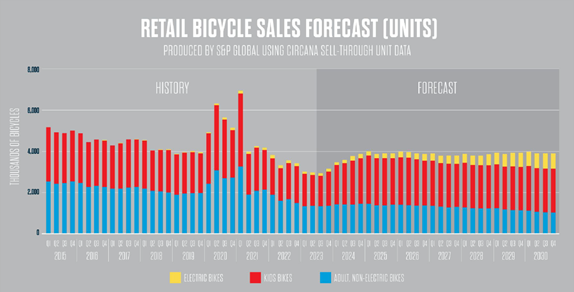
Thirty-eight million Americans rode e-bikes last year and one million e-bikes were sold in the U.S. in 2022. Will 2023 be the year that e-bikes make the jump to mainstream?
A trio of panelists tried to answer that question during a webinar, “E-bikes in New Jersey: Exploring Programs and Incentives for Micromobility.” The NJTPA sponsored the webinar as part of its Together North Jersey Initiative with the
Voorhees Transportation Center (VTC) at Rutgers University.
The panelists were John MacArthur,
Sustainable Transportation Program Manager at the Transportation Research and Education Center (TREC) at Portland State University, Luke Jones,
professor of economics at Valdosta State University, and Ash Lovell, Ph.D., electric bicycle policy & campaign director with
People for Bikes.
There is growing research that shows that e-bikes are getting more people biking, and not just for recreation but replacing vehicle miles traveled (VMT), MacArthur said.

E-bikes allow riders to ride longer with less effort, obviously making hills much easier, and are less expensive than cars or motorcycles, said Jacob Thompson of VTC, who moderated the discussion. E-bikes, however, are more expensive and have higher maintenance costs than a regular bike and are heavier, as much as 50 pounds or more. Recent fires in the news that may have started as a result of e-bikes' lithium-ion batteries likely were the result of faulty batteries, overcharging, and not being stored properly, Thompson said.
The benefits of e-bikes have led many local and state governments to offer incentives for their purchase and use. Ten states have active incentive programs either at the local or state level; in California, a program is expected to roll out statewide in early 2024.
Denver’s
incentive program, where some 7,000 vouchers have been redeemed, is often used as a model. Incentives have been reduced (from a general incentive of $400 to $300 and cargo e-bikes from $500 to $200), but adaptive e-bikes have been added to the program, at $1,400, and a low-income subsidy remains at $1,200.
Among key findings in his research, Jones found that point-of-purchase discounts are more effective than mail-in rebates and tax credits and right-sizing incentive amounts to available budget increases program effectiveness. “A lot of programs set incentives too high at first,” he said, which hurts effectiveness if the budget runs out quickly.

Lowell stressed the importance of how easily customers can have their e-bike serviced after purchase. For that reason, good relationships with local dealers who can fix problems are key. “If it’s really going to be a car replacement option, you need that good relationship,” she said.
People for Bikes offers resources for safe riding through its online E-bike Smart Guide of five modules, including one entirely about batteries, charging, and what is a safe and certified battery.
There are lots of different ways to fund incentive programs, Lowell said, with many based on objectives related to climate plans. For instance, Denver had a climate initiative ballot question and California is using its greenhouse gas reduction funds. Towns can also partner with utilities doing their own programs, she added.
“It’s harder when you have statewide programs, but at the municipal level, you can work with communities,” MacArthur said, noting Corvalis, Oregon started with a small incentive that sparked a dialogue around cycling in general. Panelists also empasized prioritizing dedicated outreach and incentives for low-income residents.
A recording of the
webinar is available here.